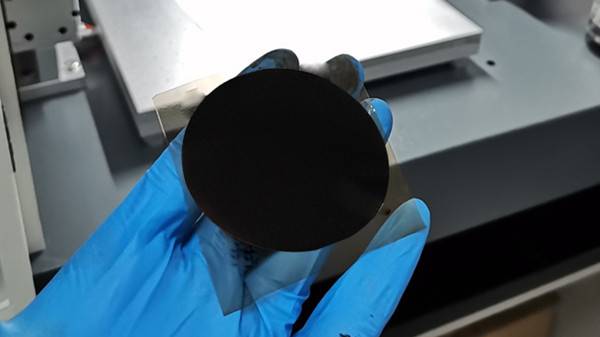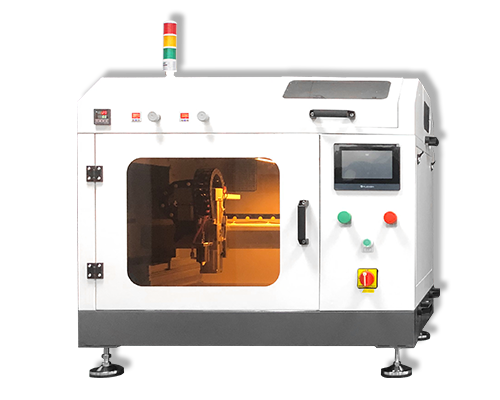Electrolytic Water Diaphragm
The electrolytic water diaphragm is a vital component in the electrolytic water device. It plays a key role in separating electrolytic products and maintaining the normal progress of electrolytic reactions. The following is a detailed introduction to the electrolytic water diaphragm:
1. Function and importance
- Separation of products: Hydrogen and oxygen are two gas products that are produced simultaneously during the electrolysis of water. Hydrogen is flammable and oxygen is combustible. When the two are mixed in a certain proportion, they are very likely to explode when exposed to open flames. The electrolytic water diaphragm can effectively separate the hydrogen produced by the cathode and the oxygen produced by the anode to prevent them from mixing with each other in the electrolytic cell, thereby ensuring the safety of the entire electrolysis process.
- Maintaining electrolyte ion conduction: The diaphragm allows specific ions to pass between the cathode and the cathode, thereby maintaining the ionic conductivity of the electrolyte, ensuring that the ions required for the electrolytic reaction can be directed under the action of the electric field, so that the reactions of the cathode and the anode can proceed continuously and orderly. For example, in some electrolytic systems, ions need to move from one electrode area to another through the diaphragm to participate in the electrode reaction. The diaphragm plays a role similar to an “ion channel”.
2. Common types and characteristics
- Asbestos diaphragm (commonly used in alkaline water electrolysis):
– Structure and composition: Asbestos is a natural fibrous silicate mineral that can be processed into a diaphragm suitable for use in water electrolysis devices. It has a porous structure, and these pores provide channels for the passage of ions in the electrolyte.
– Advantages: Asbestos diaphragms are relatively low in cost, can better separate hydrogen and oxygen in alkaline water electrolysis systems, and have a certain ion conductivity, so that ions in the electrolyte (such as hydroxide ions, etc.) can migrate between the cathode and anode. It has long been widely used in the alkaline water electrolysis hydrogen production industry.
– Disadvantages: Asbestos is a known carcinogen and has potential hazards to human health. Strict protection and environmental protection measures are required during production, use and waste disposal; at the same time, its ion conductivity efficiency still has room for improvement, and with the increase of use time, problems such as blockage and damage may occur, affecting the efficiency and safety of water electrolysis. - Proton exchange membrane (used for proton exchange membrane water electrolysis):
– Structure and characteristics: Proton exchange membrane is usually a polymer membrane with a special polymer structure, and its molecular chain contains functional groups that can conduct protons (H⁺). For example, perfluorosulfonic acid membrane is a common proton exchange membrane, and its internal sulfonic acid group can combine with protons and transfer protons. Proton exchange membranes generally have high proton conductivity and good chemical stability. They can withstand the acidic environment during the electrolysis process and the oxidizing substances produced by the electrode reaction, and have a certain mechanical strength and are not easy to break.
– Advantages: It is highly selective for protons, only allowing protons to pass through, and can accurately control the ion conduction path to ensure that the electrolysis reaction proceeds as expected and improve the efficiency of water electrolysis; it can also effectively separate hydrogen and oxygen to prevent gas mixing, so that the purity of the produced hydrogen is higher; in addition, proton exchange membrane water electrolysis devices usually have faster startup and response speeds, and are suitable for use with power sources with large fluctuations in renewable energy generation (such as wind power, photovoltaic power, etc.).
– Disadvantages: The preparation process of proton exchange membrane is complicated and costly, especially for some high-performance proton exchange membranes. The price limits the rapid promotion of proton exchange membrane water electrolysis technology in the field of large-scale, low-cost hydrogen production; and the water quality requirements for influent are very high. Impurities and metal ions in the water may affect the performance of the membrane, and a complete water purification pretreatment system is required. - Anion exchange membrane (used for anion exchange membrane water electrolysis):
– Structure and characteristics: The molecular structure of anion exchange membrane contains fixed cationic groups (such as quaternary ammonium salt groups, etc.) and movable anions (usually hydroxide ions OH⁻ can be conducted in the membrane). These fixed cationic groups are connected to the polymer main chain through chemical bonds to form ion exchange sites, and there is an electrostatic interaction between them and hydroxide ions, so that hydroxide ions can move smoothly in the membrane.
– Advantages: It has good selective permeability for hydroxide ions (OH⁻), can block other ions, ensure that only hydroxide ions participate in the ion transmission link in the electrolysis reaction process, and ensure the high efficiency of the water electrolysis reaction; when operating in an alkaline environment, relatively cheap non-precious metal catalysts can be used, which has certain cost advantages; the requirements for inlet water quality are not as stringent as proton exchange membranes, and it has strong adaptability.
– Disadvantages: At present, the ion conductivity of some anion exchange membranes is not high enough, which limits the reaction rate and efficiency of water electrolysis. It is necessary to further develop high-performance membrane materials to improve their performance; in addition, during long-term use, the chemical stability and mechanical properties of the membrane need to be further improved to meet the needs of long-term operation on an industrial scale. - Ceramic diaphragm (for solid oxide water electrolysis):
– Structure and characteristics: Ceramic diaphragms are generally made of ceramic materials, and common ones include yttria-stabilized zirconium oxide (YSZ). These ceramic materials have good ionic conductivity at high temperatures, and their internal crystal structure provides a channel for the migration of ions, which enables oxygen ions (O²⁻) to move under the action of an electric field, thereby participating in the electrolysis reaction. Ceramic diaphragms usually need to work in a high temperature environment (600℃ – 1000℃), and play their ion conduction and gas separation functions under such high temperature conditions.
– Advantages: It has high thermal and chemical stability, and can still maintain good performance in harsh environments such as high temperature and strong oxidation. It is suitable for high-temperature electrolysis systems such as solid oxide electrolysis of water; and it has good coupling with high-temperature heat sources (such as high-temperature nuclear reactors, etc.). If the cost and life-span related issues can be solved in the future, it has great application potential.
– Disadvantages: The preparation process of ceramic diaphragms is difficult and the cost is high; and it is brittle and prone to damage during processing, installation and operation; in addition, the entire solid oxide electrolysis system needs to operate at high temperature, so the high temperature resistance requirements of the equipment are high, and the initial investment and operation and maintenance costs are relatively high.
3. Performance requirements and influencing factors
- Ion selectivity: A good water electrolysis membrane needs to have high selectivity for specific ions involved in the electrolysis reaction. For example, the proton exchange membrane must selectively permeate protons, and the anion exchange membrane must selectively permeate hydroxide ions. This ensures that the electrolysis reaction proceeds in an orderly manner according to the established electrode reaction path, avoiding the reaction chaos and product mixing caused by the disordered migration of different ions.
- Ion conductivity: The ion conductivity of the membrane directly affects the rate and efficiency of the water electrolysis reaction. The higher the ion conductivity, the faster the ions migrate in the membrane, and the electrode reaction can continue more efficiently, producing more hydrogen and oxygen per unit time. The ion conductivity of different types of membranes is affected by factors such as their own material properties, membrane thickness, and temperature.
- Chemical stability: In the process of water electrolysis, the membrane has to be in contact with the electrolyte and various chemical substances produced by the electrode reaction for a long time. Therefore, it needs to have good chemical stability and will not be degraded, dissolved or structurally changed due to corrosion by the electrolyte, the influence of redox reactions, etc., to ensure that its separation and ion conduction functions can be normally performed throughout the service life of the electrolysis device.
- Mechanical properties: The electrolytic water diaphragm must have sufficient mechanical strength and flexibility to adapt to the installation, operation and other operating processes in the electrolyzer. For example, under the influence of external forces such as the flushing of the electrolyte, the squeezing of the electrode and possible temperature changes, there will be no problems such as breakage and deformation, ensuring the stable progress of the electrolytic water process.
4. Development Trends
- Performance Improvement: Continuously develop diaphragm materials with higher ion conductivity, better chemical stability and mechanical properties to improve the efficiency of water electrolysis, reduce costs and extend the service life of the diaphragm, and promote the more efficient and stable development of water electrolysis hydrogen production technology.
- Cost Reduction: At present, some high-performance diaphragms (such as proton exchange membranes, ceramic diaphragms, etc.) are expensive, which limits the large-scale application of related water electrolysis technologies. In the future, reducing the cost of diaphragms will be an important development direction by optimizing material preparation processes and exploring new low-cost alternative materials.
- Adapt to renewable energy: With the rapid development of renewable energy power generation, water electrolysis membranes need to better adapt to application scenarios coupled with renewable energy, such as improving response speed and being able to work stably under intermittent power supply, so that water electrolysis can make full use of renewable energy electricity and help green energy transformation.
In short, as a key component in water electrolysis technology, the continuous optimization of water electrolysis membrane performance and continuous reduction of costs are of great significance to the development of water electrolysis hydrogen production industry and the utilization of clean energy.
Hydrogen production by electrolysis of water is the most advantageous method for producing hydrogen. Utrasonic coating systems are ideal for spraying carbon-based catalyst inks onto electrolyte membranes used for hydrogen generation. This technology can improve the stability and conversion efficiency of the diaphragm in the electrolytic water hydrogen production device. Cheersonic has extensive expertise coating proton exchange membrane electrolyzers, creating uniform, effective coatings possible for electrolysis applications.
Cheersonic ultrasonic coating systems are used in a number of electrolysis coating applications. The high uniformity of catalyst layers and even dispersion of suspended particles results in very high efficiency electrolyzer coatings, either single or double sided.
About Cheersonic
Cheersonic is the leading developer and manufacturer of ultrasonic coating systems for applying precise, thin film coatings to protect, strengthen or smooth surfaces on parts and components for the microelectronics/electronics, alternative energy, medical and industrial markets, including specialized glass applications in construction and automotive.
Our coating solutions are environmentally-friendly, efficient and highly reliable, and enable dramatic reductions in overspray, savings in raw material, water and energy usage and provide improved process repeatability, transfer efficiency, high uniformity and reduced emissions.
Chinese Website: Cheersonic Provides Professional Coating Solutions



